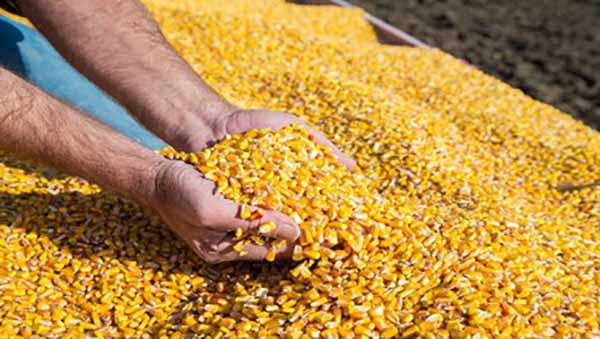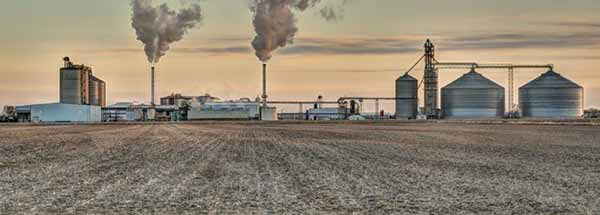One of the energy industry’s most challenging power sources to define is biofuels.
Governments and industries keen to promote sustainability have varying classifications of what makes a biofuel. With many countries looking to transition to renewable energy sources, biofuels have started to become more attractive.
Our guide to biofuels will cover their production, use, how their increased adoption affects everything from greenhouse gas emissions to food prices, and more.
What Is the Definition of a Biofuel?
‘Bio’ prefixes many words in the complex vocabulary of sustainable and renewable energy. Biofuels are made from biomass, and biofuels create bioenergy.
- Biomass is an organic matter like wood, animal waste, or algae. These raw materials are also known as feedstocks.
- Biofuel is any liquid, gas, or solid fuel created from biomass.
- Bioenergy is the name given to energy produced from biomass or biofuel.
Biomass, or organic matter, replenishes naturally: plants grow, cows deliver dung, and algae blooms. For that reason, biomass is a renewable energy source because the basic raw materials replenish forever.
Many people view biofuel as renewable energy thanks to the idea of biomass being organic material. But as we’ll see, biofuels often have a complicated role in the green energy market.
What Types of Biofuels Are There?
There are many types of biofuels in each of the solid, liquid, and gaseous states. Here are the principal biofuels:
- Wood, including wood chips, pellets, and waste, can be burned to generate heat for homes, cooking, or create electricity.
- Ethanol is liquid alcohol and one of the most common biofuels globally. This transportation fuel is often blended with gasoline for use in combustion-engine vehicles.
- Biodiesel is another liquid derived from plants that gets mixed with standard diesel fuel for use in diesel vehicles.
- Biogas is usually methane, often captured from the anaerobic breakdown of waste such as manure or other organic matter.
Many emerging biofuels follow similar production techniques to those above but are tailored for other industries. These include renewable hydrocarbons like renewable jet fuel (also known as sustainable aviation fuel), renewable gasoline, renewable diesel, methanol, and biobutanol.
Enter your ZIP Code and compare electricity rates
How Are Biofuels Made?
As we’ve seen, biofuel is a catch-all term for fuel created from biomass. As a result, there are different processes in how each biofuel is produced or collected. There are several generations of biofuels, representing the timelines of their invention.
Each biofuel production technique produces or eliminates a varying amount of carbon dioxide too, hence the difficulty in classifying all biofuels as carbon neutral.
Why Is Wood Considered a Biofuel?
Wood is a replenishable organic material that governments and industries grow to meet many needs, from paper to furniture to providing energy.
Some power plants and biomass facilities can burn wood and wood waste like wood chips, pellets, or bark to create electricity. However, burning wood and its waste under the banner of renewable energy is controversial. Growing trees helps remove carbon from the atmosphere, but burning wood releases carbon monoxide and carbon dioxide back into the atmosphere. Logging also removes swathes of carbon storage areas and can affect biodiversity and displace wildlife.
Wood is a primary biofuel because it needs no processing before use, whereas secondary biofuels require treatment. Let’s look at secondary biofuels, one by one.
How Is Ethanol Produced?
There’s a certain amount of ethanol in all alcoholic drinks, from whiskey to beer to wine. Unsurprisingly, ethanol — the biofuel — is made similarly to these beverages.
Ethanol production comes in several forms. It’s called a first-generation biofuel when made from edible food crops like sugarcane, vegetable oils (sunflower or olive), soybeans, corn, and sorghum.
Simply put, a feedstock, or biomass, is subjected to chemical reactions and heat to provoke fermentation. Plant starch turns into sugars, and finally, alcohol — in this case, ethanol.
Technology keeps pushing ethanol production forwards. A second-generation technique has evolved so previously unusable feedstocks like switchgrass, wood waste, and crop residues can make what is called cellulosic ethanol.
There are two ways to create cellulosic ethanol, also known as an advanced biofuel. For the first, a pretreatment breaks the plants’ cellulose into sugars, which ferment into ethanol. These plants are lignocellulosic, meaning they have “woody” components called lignin.
It doesn’t stop there. This lignin is recovered and then used in the second cellulosic ethanol production method. The lignin powers a thermochemical conversion process to create a gas called syngas, a mixture of hydrogen and carbon monoxide. The gas can be turned into ethanol and other liquid byproducts.
Be careful, though! You can’t just put whiskey into your automobile’s tank; sophisticated processes ensure the ethanol can be put to good use in vehicles.
How Is Ethanol Used?
Almost every vehicle owner in the United States uses ethanol every time they start their engine. Some 98% of U.S. gasoline contains ethanol, usually blended at a 10/90 ethanol-to-gasoline ratio. This gasoline is called E10 and oxygenates the fuel, helping reduce air pollution.
Other blends include E15 with 15% ethanol in the mix and E85, also called flex-fuel, for use in flexible fuel vehicles. Why don’t we use pure ethanol for fuel? Well, ethanol contains about 30% less energy than standard gasoline and is more expensive to produce than gasoline once all production processes are factored in.
Ethanol’s general use is widespread, from the manufacture of drugs, plastics, and cosmetics, to an ingredient in perfumes, mouthwash, and rubbing alcohol.
Which Country Produces the Most Ethanol?
In 2020, the United States produced almost 14 billion gallons of ethanol, primarily from corn, making it the world’s largest producer. Brazil made nearly 8 billion gallons by comparison, mainly from sugarcane, and the two countries accounted for 84% of global production that year.
How Is Biodiesel Produced?
Biofuels are also available for vehicles with diesel engines with a liquid fuel called biodiesel.
Fats and oils are the base ingredients for biodiesel; vegetable oils, used cooking oils, and animal fats can all become biodiesel.
However, the process of creating biodiesel is different from ethanol. It’s called transesterification, whereby the glycerin is removed from the oil or fat. Leftover from the process are glycerin and methyl esters, with the methyl esters used as biodiesel and the glycerin in soap and other products.
Methyl esters (biodiesel) are biodegradable, non-toxic, and have lower carbon dioxide emissions than petroleum diesel and gasoline. Diesel comes with various biodiesel blending levels.
Renewable diesel, also called “green diesel,” is distinct from biodiesel in nature and production. Renewable diesel is made from biomass and feedstocks via various techniques.
One of these is gasification, which exposes biomass to very high temperatures without combustion. The carbon monoxide, hydrogen, and carbon dioxide released are shifted to carbon dioxide and hydrogen. Hydrogen burns like natural gas but without harmful emissions, leaving just water and heat behind. Hydrogen gas can make renewable diesel, fertilizers, and more, and its CO2 emissions can be captured and stored.
How Is Biogas Produced?
Biogas, a second-generation biofuel, has two principal production methods: gasification or natural gas released from the decomposition of biomass.
Organic matter in landfill sites, wastewater treatment plants, and farmyard manure break down. Methane and carbon dioxide can be collected using anaerobic digestion techniques. This gas, also called renewable natural gas (RNG), is piped into existing natural gas infrastructures for homes and businesses or cleaned and used as fuel for adapted vehicles.
Any leftover biomass may also be burned for power or used for fertilizers.
Is Algae a Biofuel?
Algae is the third generation of biofuels. It’s one of the world’s fastest-growing plants and turns water, sunlight, and carbon dioxide into oxygen and produces biomass feedstocks.
Algae uses enzymes to feed on many materials previously considered to be waste, from sewage to carbon dioxide. The algae proliferates and produces oxygen and useful biomass material. In effect, algae takes things we can no longer utilize and squeezes more energy from them.
Scientists are continually looking for new ways to exploit algae. The U.S. Department of Energy defines current steps as maximizing the harvest and ensuring algae have optimal conditions to grow without becoming unsustainable.
Secondly, most (but not all) biomass harvests need dewatering, leaving behind as much useful material as possible. Some dewatered algal biomass is still too diluted to be used on an industrial scale, making a third concentration phase necessary. End products include materials suitable for refining into biofuels or converted into valuable animal feeds or chemicals.
The technology is developing, and groundbreaking ideas include windows full of algae. The algae reacts with carbon dioxide fed into the panes and sunlight, producing heat and biomass. The heat warms the building, and the algae windows can be used to shade rooms when the sun is intense. At the same time, biomass can be harvested and sent for processing into biofuel.
Biofuel as Renewable and Sustainable Energy
Biofuels come in many shapes and forms. Some use biomass that would otherwise be lost or discarded, giving it a second life. Others take a prime natural resource for direct use.
It’s worth considering what biofuels are attempting to achieve before assessing their environmental impact.
Why Aren’t Fossil Fuels Renewable Energy?
Climate change, driven by greenhouse gas emissions (GHG) from human activities, is warming the earth and changing the atmosphere. Temperatures are rising because of our fossil fuel use.
In 2019, fossil fuels (also called hydrocarbons) dominated global energy needs. Oil (33.1%), coal (27%), and natural gas (24.2%) accounted for 84.3% of the energy supply.
These fossil fuels may, at first glance, seem similar to the biofuels mentioned above. Methane is natural gas, coal is a solid fuel like timber, and oil is a liquid burned in various forms, just like ethanol. But fossil fuels take many millennia to develop, and are expensive and polluting to extract. They’ll eventually run out if we continue to consume them faster than they form.
This is where bioenergy comes in, accounting for around one-tenth of the world’s primary energy. And it’s bioenergy’s attempt to be a fossil fuel substitute that makes it essential both now and in the future.
Are Biofuels Good for the Environment?
In many cases, the jury’s out on whether biofuels are good for the environment. Each has its advantages and disadvantages. Every production process results in greenhouse gas emissions: the required machinery, chemicals, and factories all leave a carbon footprint.
Firstly, biomass feedstocks, waste products, and algae can all be replenished and are renewable fuels, making bioenergy a form of renewable energy. But as always, the picture isn’t always that clear.
Clearing forests for timber to burn removes vital carbon dioxide sponges from the planet, then adds carbon dioxide when the wood is burned. Trees are cleared to create arable land to grow soybeans or corn for biofuels, increasing monocultural zones and erosion, and reducing biodiversity.
Biogas methane from landfills or farms still produces carbon dioxide when we burn it in homes and businesses. However, methane is up to 80 times more warming than carbon dioxide for the first 20 years after its release, making its capture and redeployment vital.
Liquid biofuels are adaptable, blending into current fossil fuels like gasoline and using existing infrastructure. This applies to methane too. One can’t ignore that some biofuel refineries use fossil fuels to operate, adding to their lifecycle emissions.
There are moral arguments over biofuels too, especially over land use. Should we be growing crops to make fuel when there’s hunger in the world? Demand for biofuel crops can lead to food price increases, pressure on water resources, and even pollution from pesticides.
On the other hand, biofuels can increase a country’s energy self-sufficiency by reducing the need to import fossil fuels.
What Are the Advantages of Biofuels?
Bioenergy from biomass can create valuable biofuels and biogases whose advantages include:
- Recycling and reuse of what was formerly waste products
- Capturing harmful methane from farm animals and landfills and using its energy
- Creating fertilizers from waste materials
- Collecting and recycling cooking oils, animal fats, and other discarded materials to turn into valuable biofuels
- Modern technology has expanded the crops and materials used in biofuel production
- Biofuel crops remove carbon dioxide from the air as they grow
- Improving carbon-capture technology may soon remove many of the CO2 emissions from the production processes of biofuels
Biomass, Bioenergy, and Biofuels: What Next?
Bioenergy from biomass and biofuels is a fantastic way to extract the maximum energy from the world’s resources. They often cause fewer greenhouse gas emissions and can slip into the current energy supply lines without significant changes.
The United States, one of the world’s biofuel powerhouses, has signaled its intent to expand its bioenergy use and capacity. Higher ethanol blending levels of up to 15% in gasoline and multimillion-dollar support programs for biofuel producers are just some of the incentives.
There are questions about bioenergy’s carbon footprint and land use, but technological advances aim to improve efficiency and lower emissions. The future will be about who manages their resources the best, and bioenergy is part of that picture.
Have you been inspired? Don’t forget to ensure your resources are being best managed through energy conservation and efficiency, saving carbon emissions for the planet and dollars for you.
Brought to you by energysavings.com
All images licensed from Adobe Stock.
Featured image:




